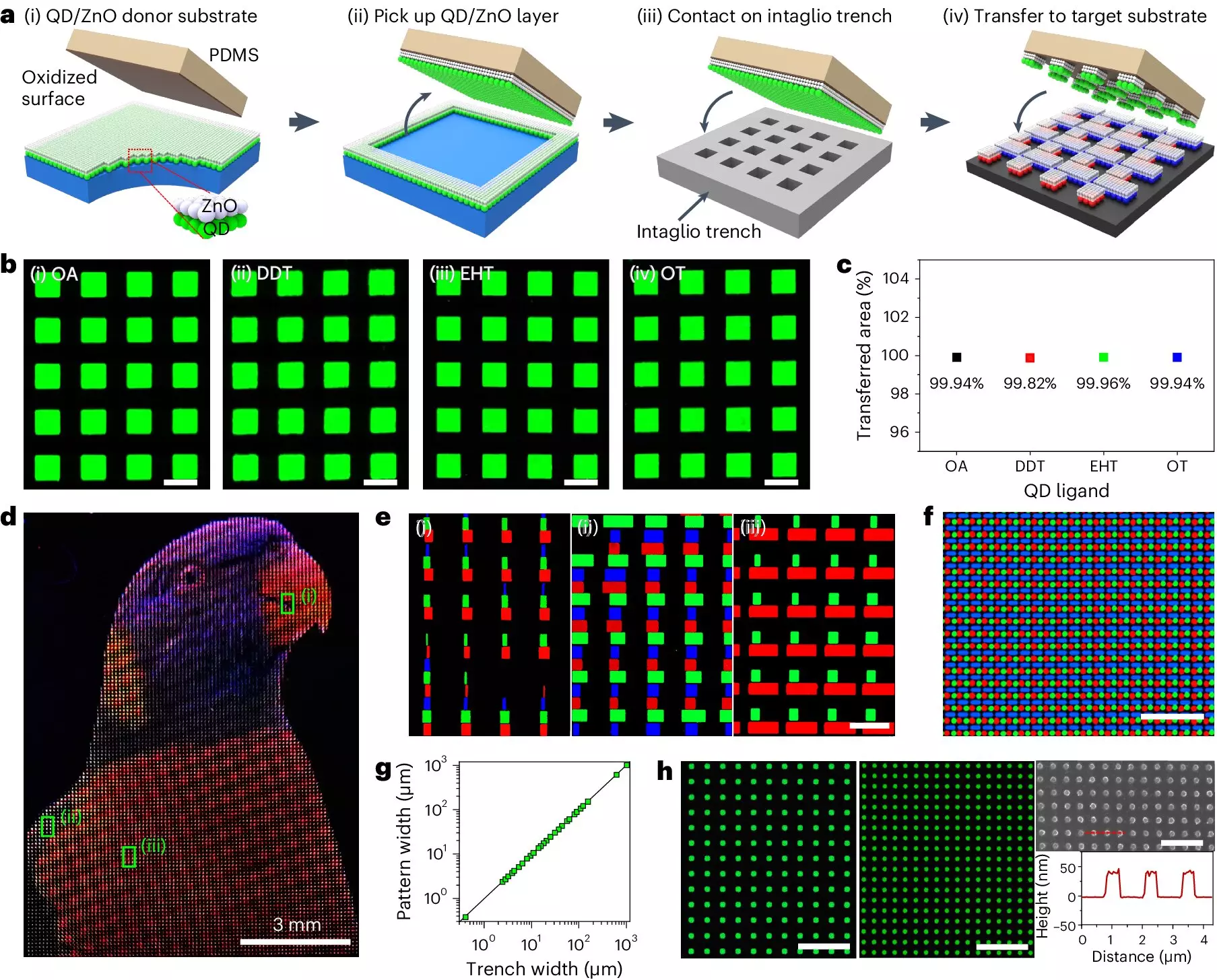The world of augmented reality (AR) and virtual reality (VR) is constantly evolving, with demands for more realistic and immersive experiences on the rise. Recent advancements in wearable technology, mobile devices, and the Internet of Things (IoT) have sparked a need for high-quality displays that can convey vast amounts of information on small screens without causing discomfort. One promising technology that aims to enhance the viewing experience in AR and VR is double-layer dry transfer printing.
A team of researchers has developed a groundbreaking double-layer dry transfer printing technology that revolutionizes the way light-emitting and electron-transferring layers are transferred onto a substrate. This innovative approach opens up new possibilities for creating brighter and more efficient light-emitting devices with ultra high-definition resolutions. The research, which was recently published in Nature Photonics, showcases the potential of this technology to transform the future of AR, VR, and wearable displays.
The Science Behind It
Traditional dry transfer printing methods have been limited by their low luminescence efficiency, making them unsuitable for actual display production. However, the new double-layer thin films developed by DGIST and UNIST researchers have overcome this challenge by reducing interfacial resistance and enabling high-resolution pixel patterning. With an external quantum efficiency (EQE) of up to 23.3%, these thin films exhibit levels of brightness and efficiency comparable to the maximum theoretical efficiency of quantum dot light-emitting devices.
The potential applications of this double-layer dry transfer printing technology are vast, ranging from ultra high-definition screens in AR and VR to wearable displays with superior image quality. By achieving patterns of quantum dots up to 25,526 pixels per inch (PPI) and demonstrating the feasibility of mass production, the researchers have paved the way for product commercialization. This technology has the potential to revolutionize the visual experience in various industries, offering brighter, more colorful, and more immersive displays for consumers.
The development of double-layer dry transfer printing technology represents a significant milestone in the field of display technology. By pushing the boundaries of resolution, brightness, and efficiency, researchers have unlocked new possibilities for creating more lifelike and engaging experiences in AR, VR, and wearable displays. With further advancements and commercialization efforts, this technology has the potential to reshape the way we interact with digital content and bridge the gap between the virtual and physical worlds.


Leave a Reply